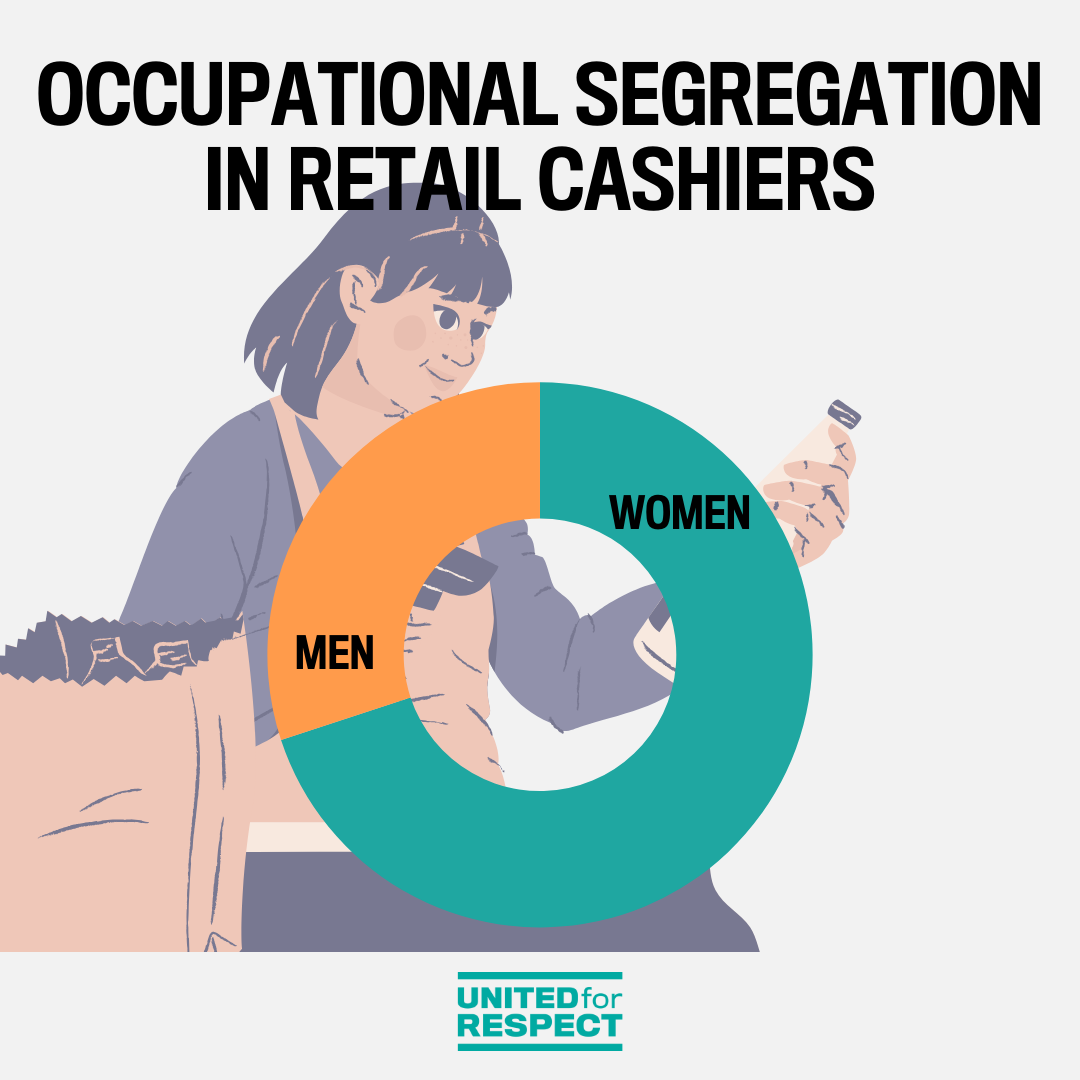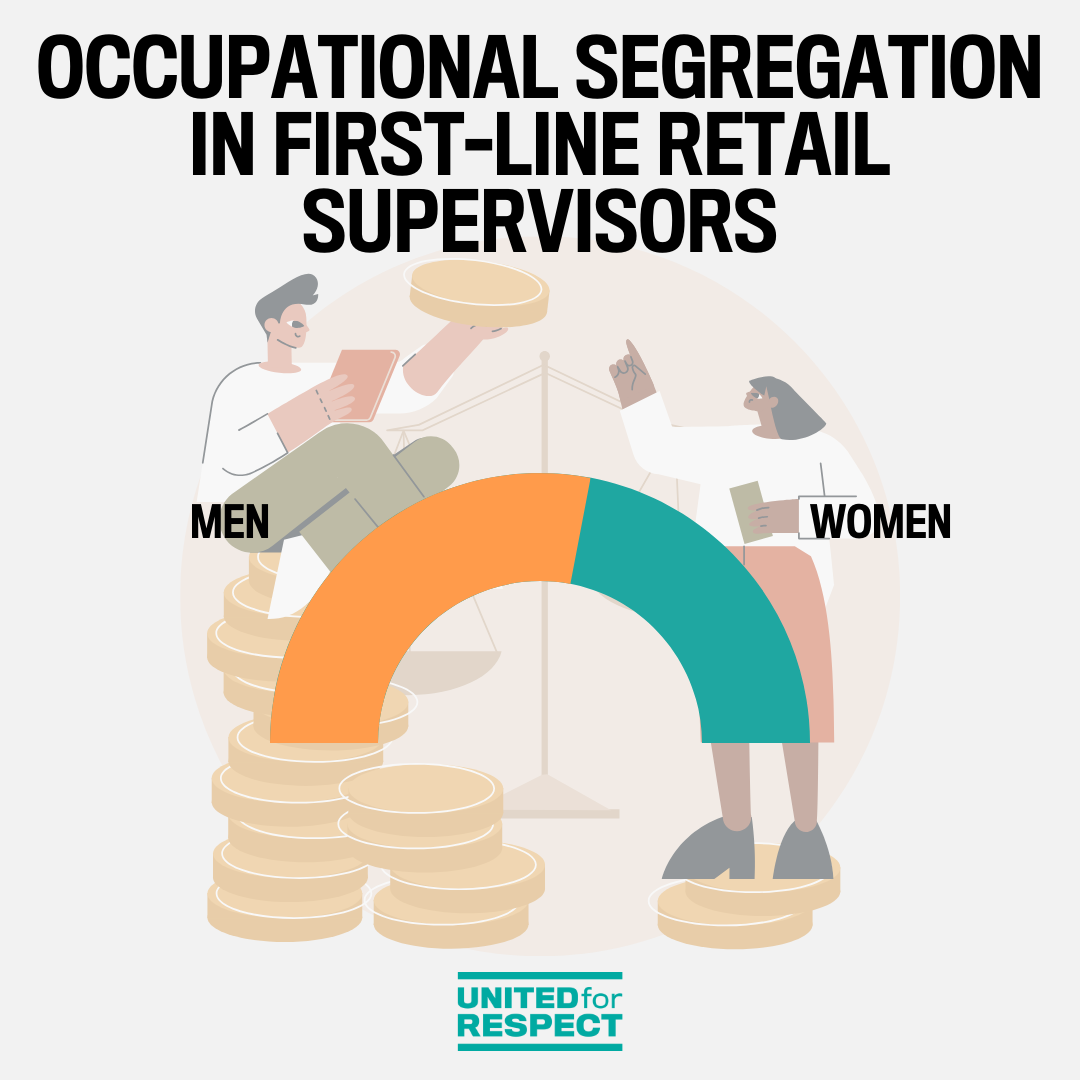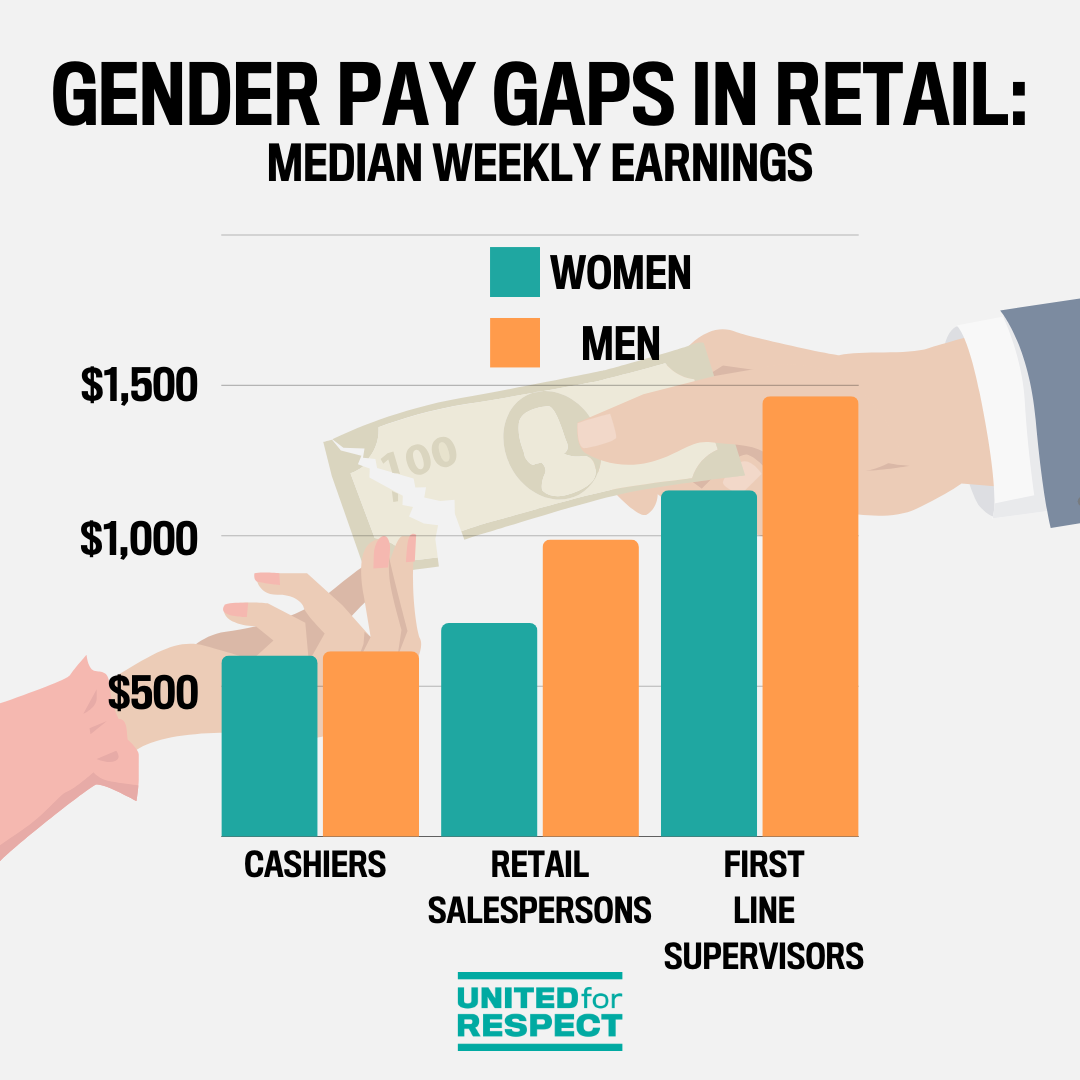How America’s Biggest Retail Corporations Perpetuate Gender Inequities
America’s retailers depend on underpaid women while men hold the retail industry’s top jobs and make decisions about pay and benefits for millions of families across the country. From ringing up customers to stocking shelves, the 7 million women working in retail find themselves concentrated in higher risk customer-facing positions and receive lower pay, less predictable schedules, and limited leadership opportunities compared to their male counterparts.
Occupational Segregation
In 2022, 7 out of 10 cashiers in the retail industry were women, the lowest paid job classification in the industry. In contrast, men comprise the majority of the industry’s first-line supervisors despite making up a minority of total retail workers.

Source: US Bureau of Labor Statistics

Source: US Bureau of Labor Statistics
Gender Pay Gaps
Women working in retail also face significant pay inequities, earning less than men in the same positions. Women who are retail salespersons earn 28% less than men in same role, and women who are first-line supervisors of retail sales workers earn 21% less than their male counterparts.

Mothers in Retail
Women raising families while working in retail face even greater challenges. Since 2013, the number of retail workers who receive health benefits from their employer has declined from 62% to just 55%. Those who are fortunate enough to qualify for paid vacation leave, receive on average only 6 days per year after 1 year of employment. Because of the limited benefits and low wages endemic to retail work (the median annual earnings for a woman working as a cashier in 2023 was $30,100), many women must depend on government assistance to get by. In 2023, 74% of women with one child who earned $25,130 – 34,840 received some type of government assistance.
Walmart
Walmart is the largest private sector employer in the world with over two million associates globally and nearly 1.6 million employees in the United States. In 2023, women comprised 53% of Walmart’s hourly U.S. workforce while top positions (managers, officers, and board of directors) continue to be dominated by men. In 2023, 37% of Walmart’s U.S. officers were women, 44% of U.S. managers were women. Representation of women at the C-suite level (President, Executive Vice President, Senior Vice President, and Vice President) is by far the worst. Women comprise only 37% of Walmart’s officers while people of color makeup only 28%.
Amazon
As the second largest private employer in the United States, Amazon has an immense impact on the warehouse and distribution side of the retail industry. In 2021, women made up 50% of Amazon’s Field & Customer Support employees but only 24% of Senior Leaders. This means that women at Amazon are over-represented in positions with lower pay, higher injury rates, and less predictable schedules and hours. But while Amazon’s warehouse operations depend on hundreds of thousands of women of color, there are only 66 Black women and 37 Hispanic women at the top of the company’s hierarchy, compared to 1,521 white men.
Recommendations
Given their sheer size, America’s biggest retail corporations have the ability to address gender inequities rampant in the industry. Policies proven to support women in the workforce include but are not limited to:
- Higher hourly wages for frontline positions;
- Wage transparency and corporate disclosure of median pay gaps;
- Paid parental leave;
- Sick leave that can be used to take care of family members;
- Accommodations for pregnant and nursing people,
- Schedule flexibility and advanced notification; and
- Dependent care FSAs so that retail workers can use pre-tax pay for childcare.
These simple policy changes could raise standards for millions of women working in retail stores and warehouses, allowing them to work and care for their families without having to make hard choices or worry about losing their jobs. Enhancing women’s economic stability would benefit employers, employees, and thousands of communities across the United States.